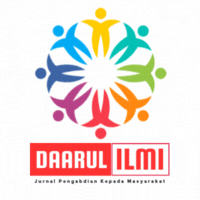Edukasi Zat Pewarna Pangan Berbahaya Di SMA Negeri 1 Sukadana
DOI:
https://doi.org/10.52221/daipkm.v1i2.410Keywords:
dyes, food additives, synthetic dyesAbstract
Introduction: In general, food coloring can be obtained from natural dyes and safe synthetic food dyes. Natural dyes are sometimes considered less stable and less durable than synthetic food dyes. Although there are synthetic dyes that are safe for food, there are still people who use materials that are not suitable for use in food. The use of harmful food dyes must be monitored and recognized for their existence. Harmful food dyes that are commonly found are textile dyes such as Rhodamine B or methanyl yellow. Because it is not a proper food coloring, consumption of foods containing this ingredient can cause a series of health problems for those who consume it, especially in a relatively long period of time. This education aims to allow students to distinguish foods that use natural coloring agents and artificial coloring agents. The results of this activity students can find out the characteristics of foods that use harmful dyes and know the prevention that can be done.
Objective: The purpose of this service is for SMAN 1 SUKADANA students to know the dangers of using hazardous coloring agents in food.
Method: The method used is providing education by providing material to students, tests before and after material on the Use of Harmful Coloring Substances in Food.
Result: Increased knowledge and attitudes of students are tested through pre-test and post-test. There has been an increase in knowledge in students about the dangers of using harmful dyes in food in general by 20%, so that the realization of the purpose of this service is expected to be able to distinguish food ingredients that contain harmful coloring agents in food and those that do not contain harmful coloring agents in food. Basically, knowledge and attitudes also depend on the high or low level of education of students. Therefore, the existence of this counseling can help students in adding insight into the dangers of using harmful dyes. The implementation of this activity can run well due to positive support in the implementation process, where support from various parties and there are no obstacles whatsoever.
Conclusion: The socialization activity on the use of dangerous coloring substances in food to students at SMAN 1 Sukadana received a good response from the school and also students. With outreach activities regarding this, students will understand and be more careful in choosing food to avoid these chemicals.
References
Adriani, A., & Zarwinda, I. (2019). Pendidikan Untuk Masyarakat Tentang Bahaya Pewarna Melalui Publikasi Hasil Analisis Kualitatif Pewarna Sintetis Dalam Saus. Jurnal Serambi Ilmu, 20(2), 217. https://doi.org/10.32672/si.v20i2.1455
Chadijah, S., Ningsih, S., Zahra, U., Adawiah, S. R., & Novianty, I. (2021). Ekstraksi dan Uji Stabilitas Zat Warna Alami dari Biji Buah Pinang (Areca catechu L.) sebagai Bahan Pengganti Pewarna Sintetik pada Produk Minuman. KOVALEN: Jurnal Riset Kimia, 7(2), 137–145. https://doi.org/10.22487/kovalen.2021.v7.i2.15541
Febrina, W., Abdillah, N., Indrawan, S., Harfrida, E., & Srihandayani, S. (2022). JPK: Jurnal Pengabdian Kompetitif Edukasi Siswa Sekolah Dasar Mengenai Jajanan Sehat. Jurnal Pengabdian Kompetitif, 1(2), 98–104.
Gharagozloo, M., Kalantari, H., Rezaei, A., Maracy, M. R., Salehi, M., Bahador, A., Hassannejad, N., Narimani, M., Sanei, M. H., Bayat, B., & Ghazanfari, H. (2015). CLINICAL STUDY Immune-mediated cochleovestibular disease. Bratislavsk?? Lek??Rske Listy, 116(5), 296–301. https://doi.org/10.4149/BLL
Handayani, R., & Larasati, H. Y. (2018). Identifikasi Pewarna Sintesis Pada Produk Olahan Bunga Rossela (Hibiscus sabdariffa) Dengan Metode Kromatografi Lapis Tipis. Anterior Jurnal, 17(2), 130–135.
Hevira, L., Desmi Alwinda, & Najmi Hilaliyati. (2020). Analisis Pewarna Rhodamin B pada kerupuk merah di Payakumbuh. Chempublish Journal, 5(1), 27–35. https://doi.org/10.22437/chp.v5i1.7912
Hidayah, R., Asterina, A., & Afriwardi, A. (2017). Hubungan Tingkat Pendidikan dan Pengetahuan Penjual Es Campur Tentang Zat Pewarna Berbahaya dengan Kandungan Rhodamin B dalam Buah Kolang Kaling di Kota Padang. Jurnal Kesehatan Andalas, 6(2), 283. https://doi.org/10.25077/jka.v6i2.692
Jannah, orchidosia zukhruffin, Suwita, I., & Jayadi, L. (2021). Analisis Pewarna Rhodamin B Dan Pengawet Analysis of Rhodamin B Color and Natrium Benzoat Preservation in Tomato Sauce That Is Traded in a Big Market Traditional City of Malang. Jurnal Riset Kefarmasian Indonesia, 3(1), 10–17.
Junaidi, & Syahrizal. (2020). Pemanfaatan pewarna alami sebagai pengganti zat pewarna sintetis Rhodamin B pada es krim Utilization of natural dyes instead of synthetic dyes Rhodamine B on ice cream. Pemanfaatan Pewarna Alami Sebagai Pengganti Zat Pewarna Sintetis Rhodamin B Pada Es Krim, 1, 1–8.
Mastuti, I. E., Fristianingrum, G., & Andika, Y. (2013). Simposium Nasional RAPI XII-2013 FT UMS Ekstraksi dan Uji Kestabilan Warna Pigmen Antosianin dari Bunga Telang (Clitoria ternatea) sebagai Bahan Pewarna Makanan. Simposium Nasional RAPI XII, 44–51.
Murtiyanti, M. F. (2014). Indentifikasi Penggunaan Zat Pewarna Pada Pembuatan Kerupuk Dan Faktor Perilaku Produsen (Studi Pada Sentra Kerupuk di Desa Ngaluran Kec. Karanganyar Kab. Demak). Unnes Journal of Public Health, 2(1).
Nurullah afifah, F. dkk. (2015). Prosiding Pendidikan Dokter ISSN: 2460-657X. 694–699.
Oktarina, K., & Arsilenda. (2017). Penyuluhan Bahaya Pewarna Dan Pengawet (Zat Adiktif) Pada Makanan Di Dusun Jepang Desa Krawang Sari Kecamatan Natar Lampung Selatan. Sosioteknologi Kreatif, 1, 89–102.
Pertiwi, D., Sirajuddin, S., Najamuddin, U., Studi, P., Gizi, I., Kesehatan, F., Universitas, M., & Makassar, H. (2013). Analisis Kandungan Zat Pewarna Sintetik Rhodamin B Dan Methanyl Yellow Pada Jajanan Anak Di Sdn Kompleks Mangkura Kota Makassar. Repository Universitas Hasanudinasanudin, 1–14.
Pratiwi, R. H. (2017). Mekanisme Pertahanan Bakteri Patogen Terhadap Antibiotik. Jurnal Pro-Life, 4(3), 418–429.
Qodri, U. L., & A’yuni, Q. (2023). Penyuluhan tentang Pengenalan dan Deteksi Zat Aditif Berbahaya pada Makanan serta Dampaknya bagi Kesehatan di Desa Kertosari Situbondo. Jurnal Abdi Masyarakat Indonesia, 3(2), 451–456. https://doi.org/10.54082/jamsi.680
Rosmiati, K. (2020). Penyuluhan Bahan Tambahan Makanan Untuk Siswa Sekolah Dasar Santa Maria 2 Pekanbaru. Jurnal Pengabdian Masyarakat Khatulistiwa, 3(2), 67–70. https://doi.org/10.31932/jpmk.v3i2.819
Sambu, S., Hemaram, U., Murugan, R., & Alsofi, A. A. (2022). Toxicological and Teratogenic Effect of Various Food Additives: An Updated Review. BioMed Research Internasional. https://doi.org/10.1155/2022/6829409
Surati, S. (2015). Bahaya Zat Aditif Rhodamin B Pada Makanan. Biosel: Biology Science and Education, 4(1), 22. https://doi.org/10.33477/bs.v4i1.526
Wahyuni, I. (2013). Pemeriksaan Kandungan Pemanis dan Pewarna Sintetik dalam Es Lilin Tidak Bermerek dan Tidak Berlabel yang Diproduksi oleh Industri Rumah Tangga “X” Kecamatan Ambulu-Jember. Jurnal Ilmiah Mahasiswa Universitas Surabaya, 2(2), 1–16.
Zulaidah, A., & Juliani, R. D. (2020). Penggunaan Bahan Pewarna Tekstil Pada Makanan Terhadap Kesehatan Masyarakat. Majalah Ilmiah Inspiratif, 5(9), 18–24.
Downloads
Published
How to Cite
Issue
Section
License
Copyright (c) 2023 Doni Setiawan, Rivana Ariyadi, Euis Tia Istianah

This work is licensed under a Creative Commons Attribution 4.0 International License.












